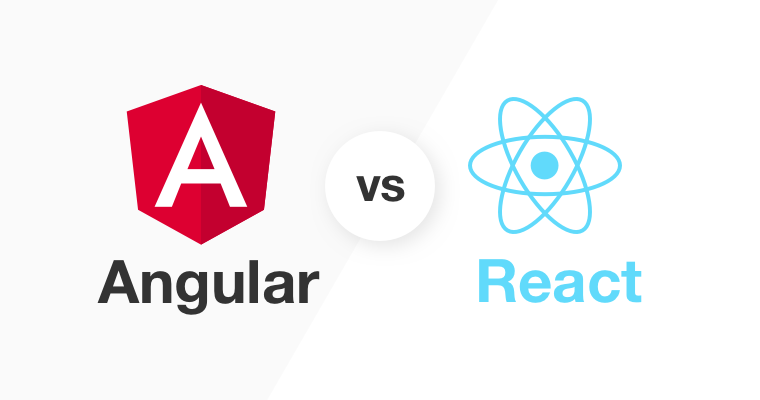Angular vs React: Which One is Best Choice for 2024? (UPDATED)
When deciding between Angular and React for your projects in 2024, it's crucial to understand the strengths and weaknesses of each framework. By comparing their features, performance, and community support, you can make an informed choice that aligns with your development goals. Let's explore the key factors to consider when choosing between Angular and React in the upcoming year. Angular has long been praised for its robust performance and efficiency. In 2024, the framework continues to shine with its advanced optimization techniques and streamlined rendering process. With Angular's Ahead-of-Time (AOT) compilation and improved tree-shaking capabilities, developers can create lightning-fast applications that deliver seamless user experiences. React, on the other hand, has been on a constant trajectory of performance enhancements. With the introduction of features like Concurrent Mode and Suspense, React applications in 2024 boast remarkable responsiveness and speed. Additionally, the React team's relentless focus on optimizing the framework's internal workings ensures that developers can squeeze out every ounce of performance from their applications. The Angular community has witnessed exponential growth over the years, solidifying its position as a powerhouse in the world of web development. In 2024, developers have access to a vast array of resources, including comprehensive documentation, active forums, and a plethora of third-party libraries and tools. The unwavering support from the Angular community ensures that developers can tackle any challenge with confidence. React's community is equally vibrant and engaged, with developers constantly pushing the boundaries of what's possible with the framework. In 2024, React enthusiasts can take advantage of a wealth of tutorials, blog posts, and online communities to enhance their skills and stay updated on the latest trends and best practices. The collaborative nature of the React community fosters innovation and drives the evolution of the framework. Angular's architecture is inherently designed for scalability, making it the framework of choice for large-scale enterprise applications. In 2024, Angular offers robust features such as lazy loading, modular design, and dependency injection, empowering developers to build scalable applications that can grow with their business needs. React's lightweight and flexible nature make it ideal for projects of all sizes. In 2024, React continues to provide developers with the freedom to structure their applications as they see fit, whether it's through functional components, hooks, or state management libraries like Redux or MobX. This flexibility enables developers to tailor their solutions to meet specific requirements without unnecessary constraints. Angular's comprehensive documentation and opinionated approach to development can make it slightly daunting for newcomers. However, once developers grasp the fundamental concepts and conventions, they can leverage Angular's powerful features to accelerate their workflow and build robust applications efficiently.Performance Comparison:
Speed and Efficiency of Angular in 2024
Performance Improvements in React for 2024
Community Support:
Angular Community Growth and Resources in 2024
React's Community Engagement and Updates for 2024
Scalability and Flexibility:
Scalability Features of Angular in 2024
Flexibility Options Offered by React in 2024
Learning Curve and Development Time:
Ease of Learning Angular in 2024
Share your project details to build your path toward success.
Development Speed with React in 2024
React's minimalist syntax and component-based architecture contribute to a gentle learning curve, making it accessible to developers of all skill levels. In 2024, React's emphasis on simplicity and reusability translates to faster development cycles, allowing teams to iterate rapidly and deliver high-quality code without sacrificing speed or performance.
Industry Adoption and Job Trends:
Angular's Place in the Industry in 2024
Angular continues to maintain a strong foothold in the industry, particularly in sectors such as finance, healthcare, and enterprise software. With its built-in support for TypeScript and comprehensive tooling ecosystem, Angular remains the go-to choice for organizations seeking stability, scalability, and long-term support for their mission-critical applications.
Job Market Demand for React Developers in 2024
React's skyrocketing popularity has led to a surge in demand for skilled React developers across various industries. In 2024, companies of all sizes are actively seeking talent proficient in React to spearhead their web development initiatives. From startups to tech giants, the demand for React expertise shows no signs of slowing down, making it a lucrative skill for aspiring developers to acquire.
Conclusion
Both Angular and React offer compelling features and benefits that cater to different needs and preferences. For projects requiring maximum performance, scalability, and comprehensive support, Angular remains a solid choice. On the other hand, React's flexibility, simplicity, and widespread adoption make it an attractive option for startups and small to medium-sized businesses looking to innovate and iterate quickly.
Ultimately, the best choice between Angular and React depends on your specific project requirements, team expertise, and long-term goals. Whether you opt for the structured approach of Angular or the agile nature of React, one thing is certain: with the right framework in your arsenal, you can bring your vision to life and stay ahead in the ever-evolving landscape of web development.
Ready to elevate your web development projects with Angular or React? Contact IIH Global now at sales@iihglobal.com to discuss your requirements and take the next step towards success.







